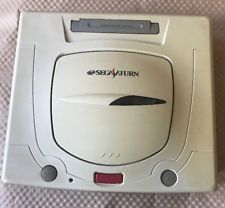Posted By: wraggster
Heres the latest from Rockin-B:
Hello everyone, you might have noticed the lack of updates recently. That's due to a new job I got, which will take me quite busy for the next couple of months. Nevertheless, I've been doing some Saturn related stuff and I will do so in the future, too.
I would like to release the source code of the SNES emulator for SEGA Saturn as well as the SGL replacement Saturn software library, but haven't had time yet to clean up the sources. If I got some, I'll publish them.
The C4 - 2006 Saturn Coding Contest is of course still running untill the end of november. Everyone is invited to create a game or demo with impressive graphics. Show us what you can! What is it that you can do to achieve impressive graphics, you ask? Well, personally, I had 3d graphics in mind when I started the contest. It's much easier for you to have action on the screen with 3d graphics than with 2d graphics. So many things where a little action in the program causes a lot of action on the screen. You can work with textures, change polygon colors, use gouraud shading, have moving light sources. To let 3d objects move around, rotate, scale and smoothely change their appearance is rather easy in 3d. Whenever you can, avoid still images because they get boring after whatching them for a few seconds, no matter how beautiful they are. In addition to the VDP1 (sprites and polygons), don't miss using the VDP2 (background scrolls) for mode-7-style rotated 3d background planes and color calculations and stuff, because it's for free, it doesn't cost more cpu processing power.
Approach the limits, my friends, use a high polygon count, choose the highest possible screen resolution that's appropriate for your entry. Keep in mind that double interlace (2x vertical resolution) halfes the maximum framerate and may cause some flickering on images, while hires display (2x horizontal resolution) forces paletted sprites (no gouraud shading and lightning) and limits the number of VDP2 backgrounds (only 4 cycle patterns instead of 8). So for 2d games, you can almost always use double interlace and hires. For 3d games, you can use double interlace when your game doesn't need more than 30(NTSC)/25(PAL) frames per second.
Some side notes:
You can use different resolutions for VDP1 and VDP2: this way you can have normal resolution 3d polygons combined with hires and double interlaced background scrolls (like done in Atlas).
You can get 10 percent extra overall system speed by choosing vertical resolutions like 352 or 704 instead of 320 and 640 (Like done in Save Game Manager).
You can even use hires with 3d gfx and apply red gouraud shading to create really professional effects like the chrome and bump effect shown in the CHROME example of the SGL library. This is definitly a topic for advanced programmers.
More Info --> http://www.rockin-b.de/news-latest.html
 Sega Everdrive Flashcart
Sega Everdrive Flashcart




